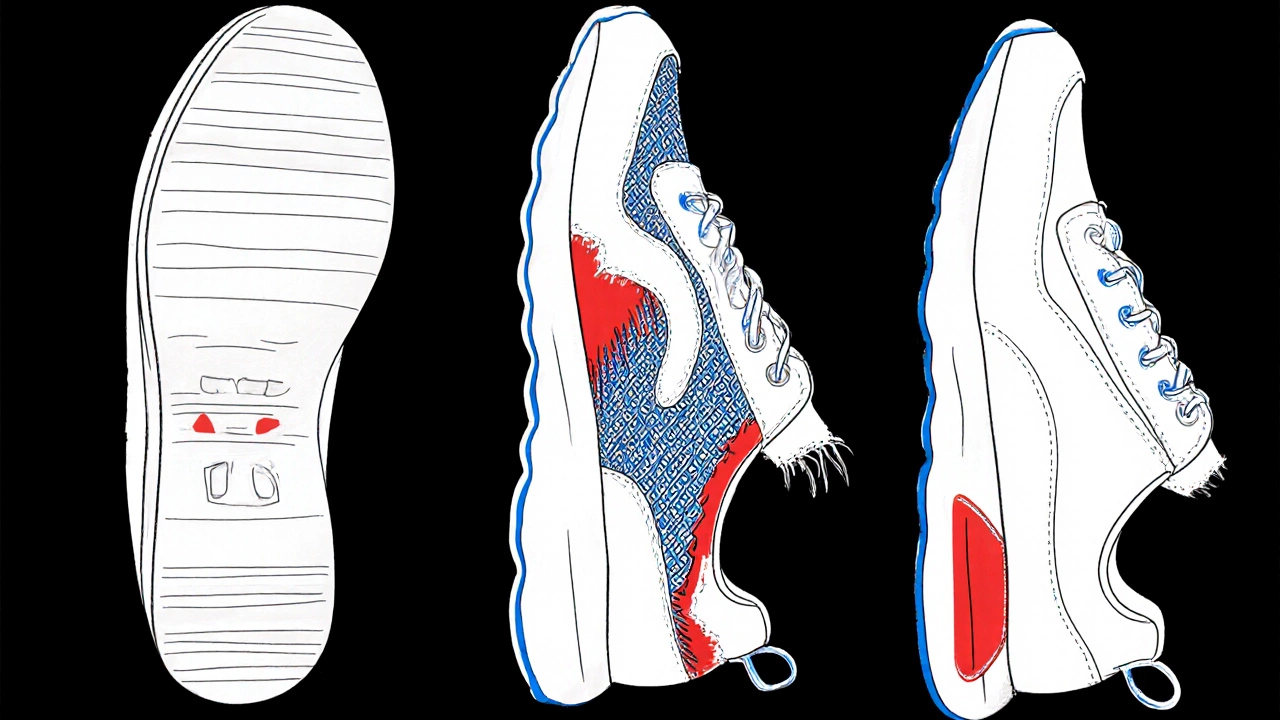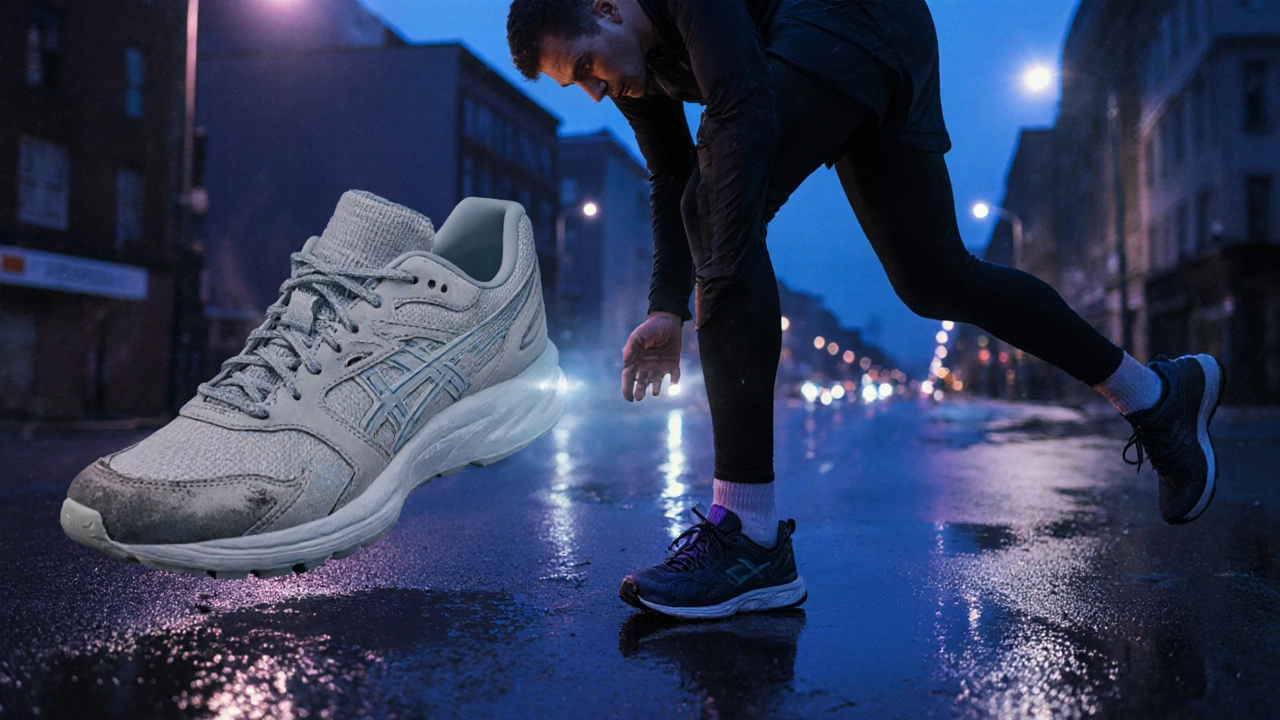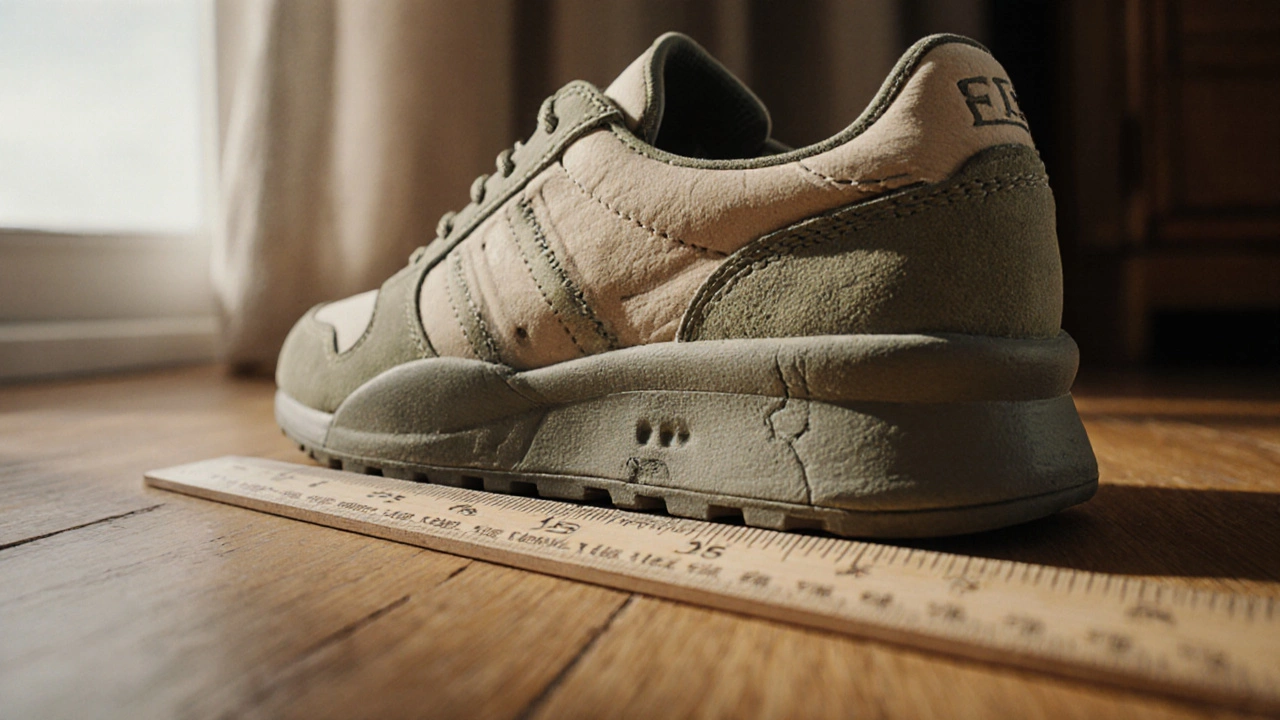Shoe Replacement Checker
Answer the following questions about your shoes to determine if they need replacing.
Click "Check My Shoes Now" to see if it's time to replace your shoes.
Knowing when to toss out a pair of shoes is a common dilemma for anyone who buys footwear. A pair that once felt comfortable can slowly turn into a source of blisters, bad posture, or even injury. This guide walks you through the visual cues, performance drop‑offs, and health risks that tell you it’s finally time to replace them.
Key Takeaways
- Check outsole depth: less than ¼ inch (6mm) usually means the grip is gone.
- Feel the mid‑sole: a noticeable loss of bounce or a “dead” feeling signals compression.
- Inspect the upper: frayed stitching, cracked leather, or stretched mesh mean the shoe can’t protect your foot.
- Watch for chronic foot pain: recurring aches often point to worn‑out support.
- Rotate shoes and clean them regularly to stretch their usable life.
Visual Cues That Your Shoes Are Past Their Prime
Even a quick glance can reveal a lot. Here’s what to look for:
- Outsole wear: The tread pattern should still be visible. If the tread is smoothed out or the rubber is thin, traction is compromised.
- Upper damage: Look for ripped seams, peeling leather, or holes in the mesh. These gaps let water and debris in and reduce support.
- Heel counter collapse: The back of the shoe should stay rigid. If the heel wiggles or looks floppy, the shoe can’t hold your heel steady.
- Odor and mildew: Persistent smells despite washing indicate that the inner lining has held onto bacteria.

Performance Drop‑Off: How Your Shoes Feel When They’re Worn
Beyond looks, the way a shoe moves with you tells a story. Pay attention to these sensations:
- Reduced cushioning: A thudding impact when you jog or walk means the mid‑sole foam has broken down.
- Uneven support: If you feel the foot sliding inside, the insole has lost shape.
- Stiffness or cracking: Hard spots in the sole or a cracking flex point indicate material fatigue.
Typical Lifespans for Different Shoe Types
Not all shoes wear out at the same rate. Below is a quick reference based on average usage:
| Type | Typical Miles / Uses | Key Wear Indicator |
|---|---|---|
| Running shoes | 300‑500 miles (≈400‑800 km) | Mid‑sole feels flat, outsole tread worn |
| Training / Cross‑fit shoes | 200‑300 sessions | Heel counter loosens, upper scuffs |
| Casual sneakers | 1‑2 years of daily wear | Outsole thinning, lack of bounce |
| Leather dress shoes | 5‑7 years (if polished) | Cracks in leather, worn heel |
| Boots (work or fashion) | 3‑5 years | Collapsed mid‑sole, broken eyelets |
Foot Health Risks of Wearing Worn‑Out Shoes
Continuing to wear shoes that have lost their structural integrity can lead to:
- Plantar fasciitis: Poor arch support strains the heel ligament.
- Blisters and calluses: Friction increases when the upper no longer fits snugly.
- Knee and hip pain: Misaligned feet change gait, putting extra stress on joints.
- Overpronation or supination: Worn soles can no longer control foot roll.
These issues often start as mild aches but can become chronic if ignored.

Tips to Extend the Life of Your Shoes
- Rotate pairs: Using the same shoes every day speeds up wear. Alternate with at least one other pair.
- Keep them dry: Moisture breaks down glue and leather. Store in a ventilated area and use shoe trees.
- Use proper cleaners: Mild soap for canvas, leather conditioner for dress shoes, and a sneaker brush for mesh.
- Replace insoles: Fresh insoles restore cushioning even when the mid‑sole starts to soften.
- Mind the surfaces: Running on pavement wears out outsoles faster than softer trails.
Replacement Checklist - Do You Need New Shoes?
Grab a pen and run through this quick list. If you answer “yes” to two or more items, it’s time for a new pair.
- Outsole tread < ¼ inch (6mm) deep?
- Mid‑sole feels dead or hard?
- Upper shows cracks, tears, or stretched areas?
- Persistent foot pain after wearing them?
- Odor remains after thorough cleaning?
- Heel counter no longer holds shape?
Frequently Asked Questions
How many miles can I get out of running shoes?
Most experts recommend replacing running shoes after 300‑500 miles. Beyond that, the mid‑sole loses its shock‑absorbing ability, increasing injury risk.
Can I fix worn soles with a shoe repair shop?
Yes, resoling works well for many sneakers and dress shoes, but it’s only worth it if the uppers and internal structure are still solid. If the heel counter is cracked, replacement is better.
Do leather shoes need to be replaced more often than sneakers?
Leather dress shoes can last 5‑7 years with proper polishing, while casual sneakers often need a swap after 1‑2 years of daily wear.
Is it okay to wear shoes that look fine but feel uncomfortable?
Comfort matters more than appearance. If you feel pain or notice reduced bounce, the shoe's internal components have likely degraded and should be replaced.
How often should I rotate my shoe lineup?
A good rule of thumb is to have at least two pairs for each activity (e.g., running, casual). Rotate them every other day to give materials time to recover.
